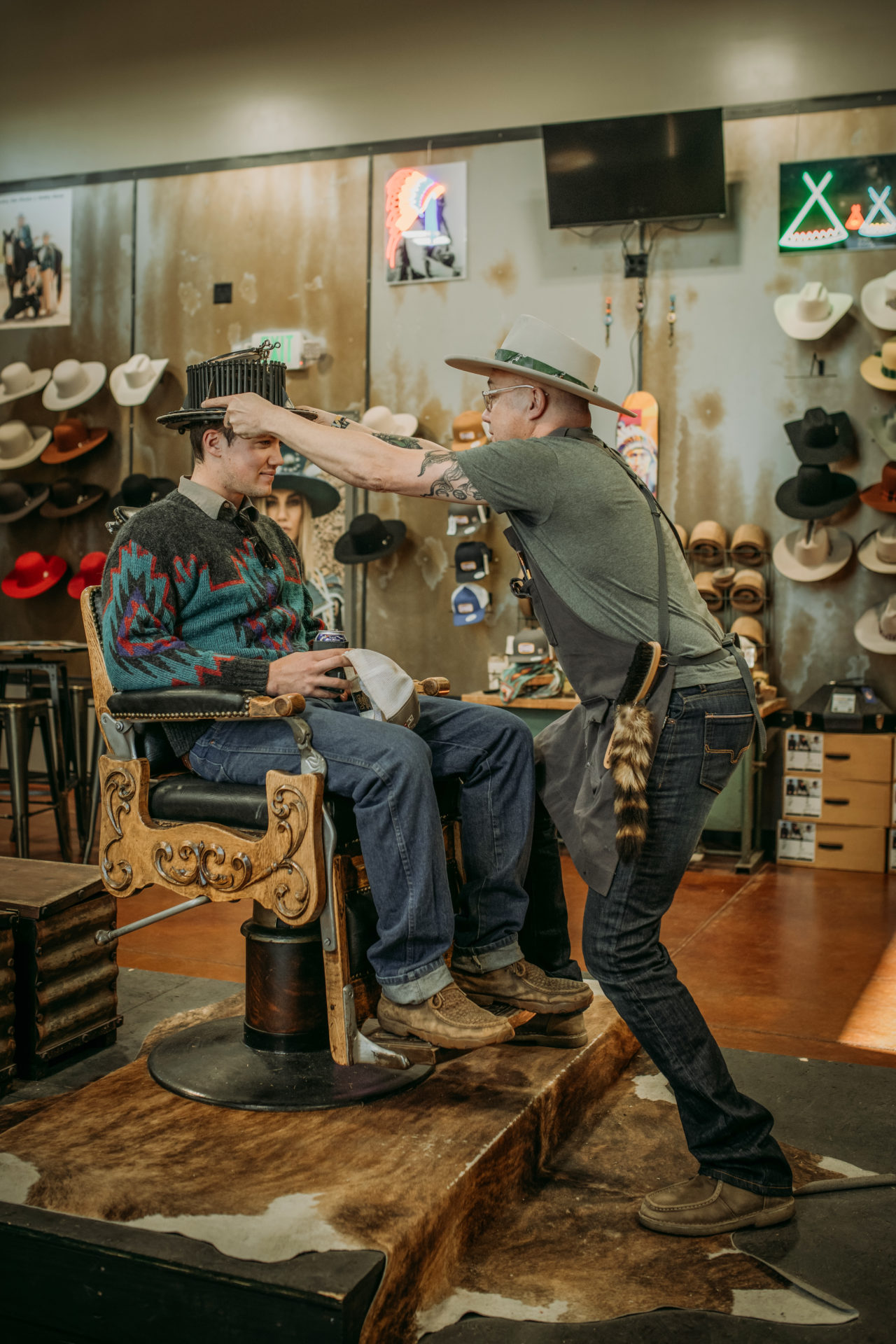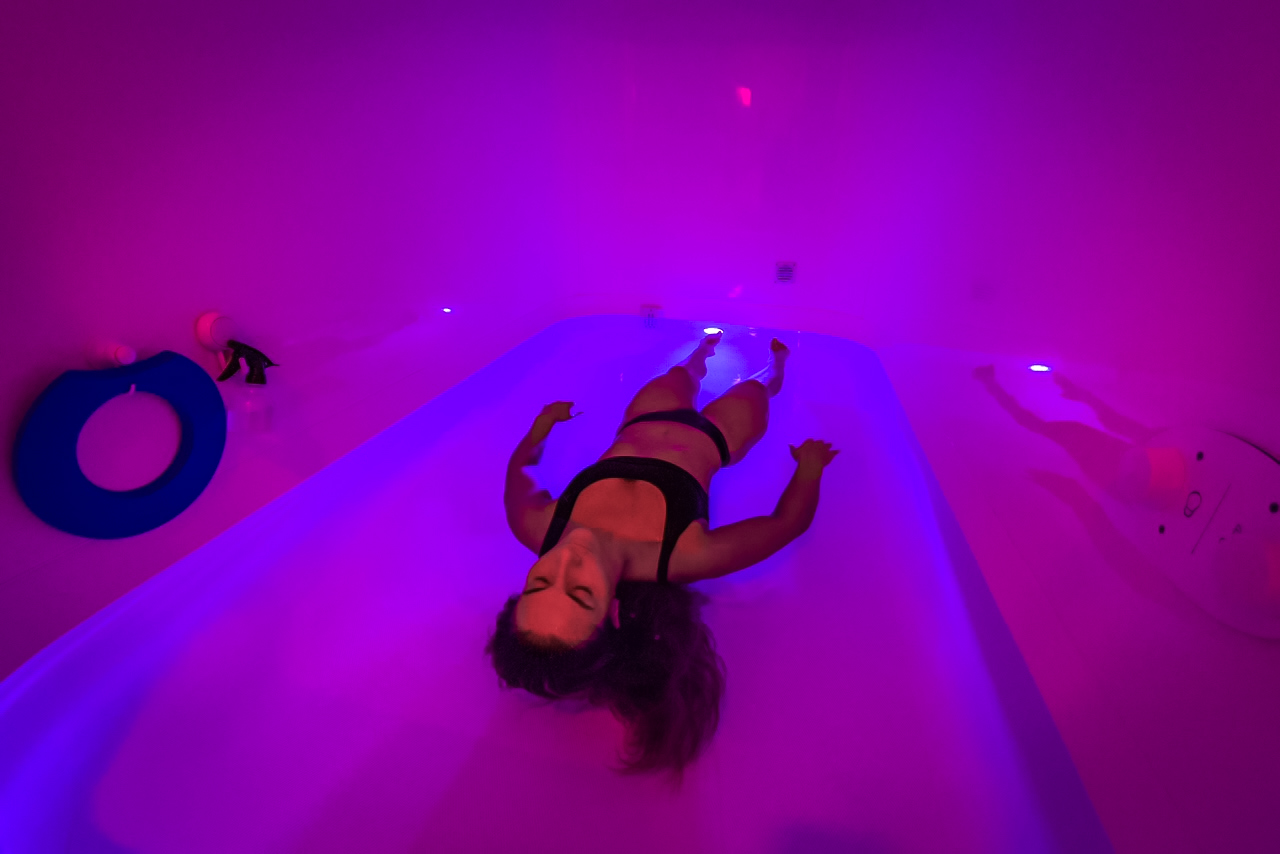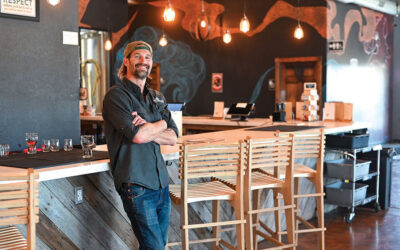Building and decor trends blend individuality with history
by Pam Sunderman | photos by Ben Bradley
Northern Colorado is a gorgeous place to live. People want to move here and stay, and who can blame them? We are surrounded by a beautiful landscape that is constantly pressing on our doorstep. There is something enchanting about spending time here. The combination of wide streets, mature landscape and majestic environment seems almost intentional in its charm.
In fact, it was – and is – quite intentional. NOCO’s early planners and developers provided the blueprint for how the region has developed and how we live within the surrounding environment to this day, and within this framework, the rich cultural history of our region defines our style.
Franklin Avery was one of those early design influencers. Born in 1849 in upstate New York, Avery moved to Colorado in 1870 to survey and plat the newly established town of Greeley. Two years later, the Fort Collins Agricultural Colony chose him as engineer to lay out the streets of the new town of Fort Collins, and he was elected Larimer County surveyor. Avery Park in western Fort Collins bears his name, which is fitting because he built parks and open space into his urban plans from the very beginning. That early interface with nature and open space remains a strong influence on today’s NOCO design aesthetic.
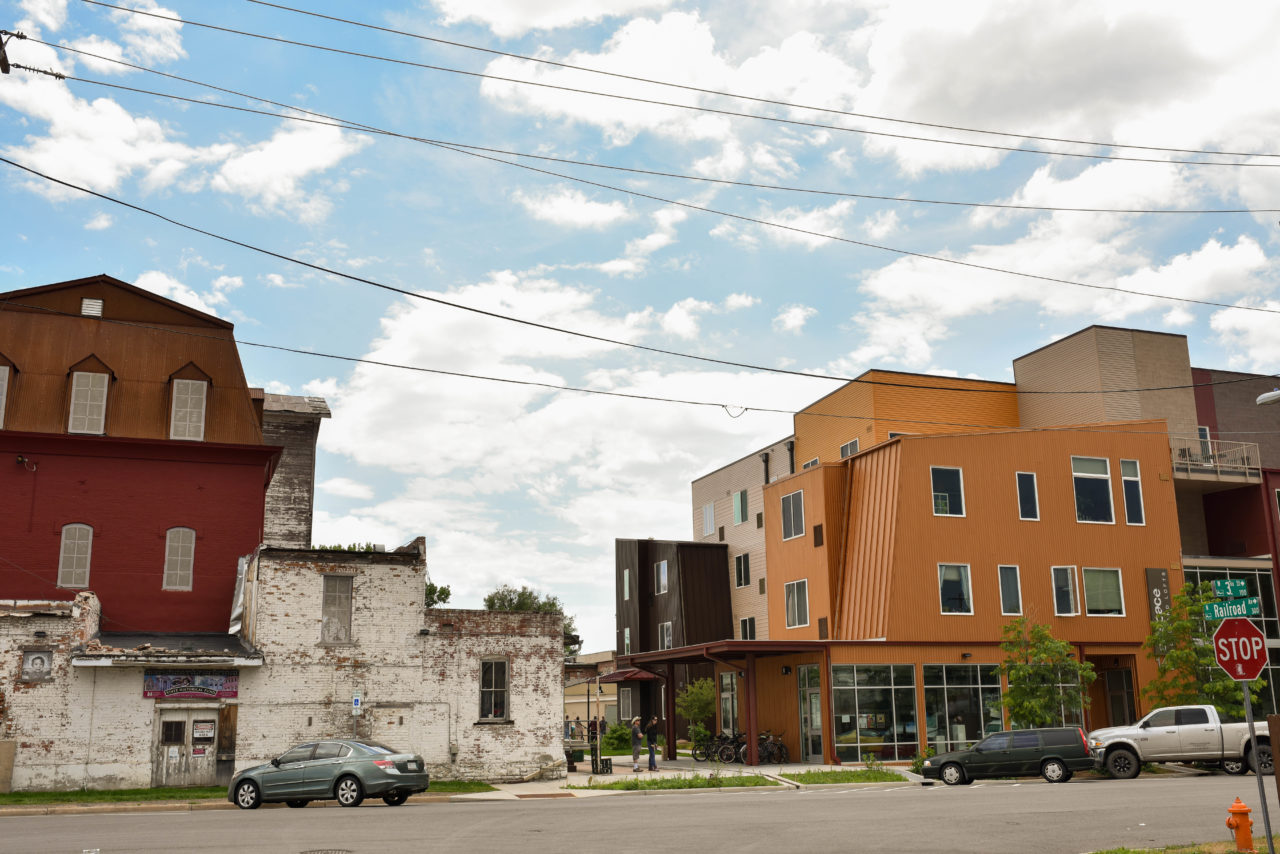
Old meets new in Loveland – and throughout NOCO
Necessity Versus Intent
Have you ever traveled to the ocean and come across a beach house that just resonates with you? Or walked into a boutique hotel in Santa Fe that just seems to embody the Southwest? Or been awed by the magnificence of a grand lodge in a national park, such as the Majestic Yosemite Hotel? Do you ever wonder what makes these places so captivating, so soothing in the way that every element and detail just seems to belong?
These places feel this way because they are authentic to their environment and cultural history. They resonate because they use locally sourced materials that represent their surroundings, and they reflect the values and aspirations of the communities in which they reside.
“Using locally sourced materials is much more honest to our environment than importing materials from elsewhere,” says Aaron Everitt, owner of Fort Collins-based Woodwöl. “Using locally sourced materials was historically done for economic
reasons. It was less expensive than using imported materials. That is no longer the case.”
NOCO has experienced tremendous growth in the past 40 years, with many architectural and design styles converging. In the past decade, however, we have seen the movement toward intentional design that honors the context of the building’s environment and history with locally sourced products.
An excellent example of this movement is Ginger and Baker in Fort Collins. Now home to a market, bakery, teaching kitchen, restaurants and event spaces, the building began as a feed store, grain elevator and warehouse. This venue has successfully respected the essence of the original building’s history while creatively repurposing historic spaces and artifacts, rather than gutting everything and replacing it with new, meaningless design.
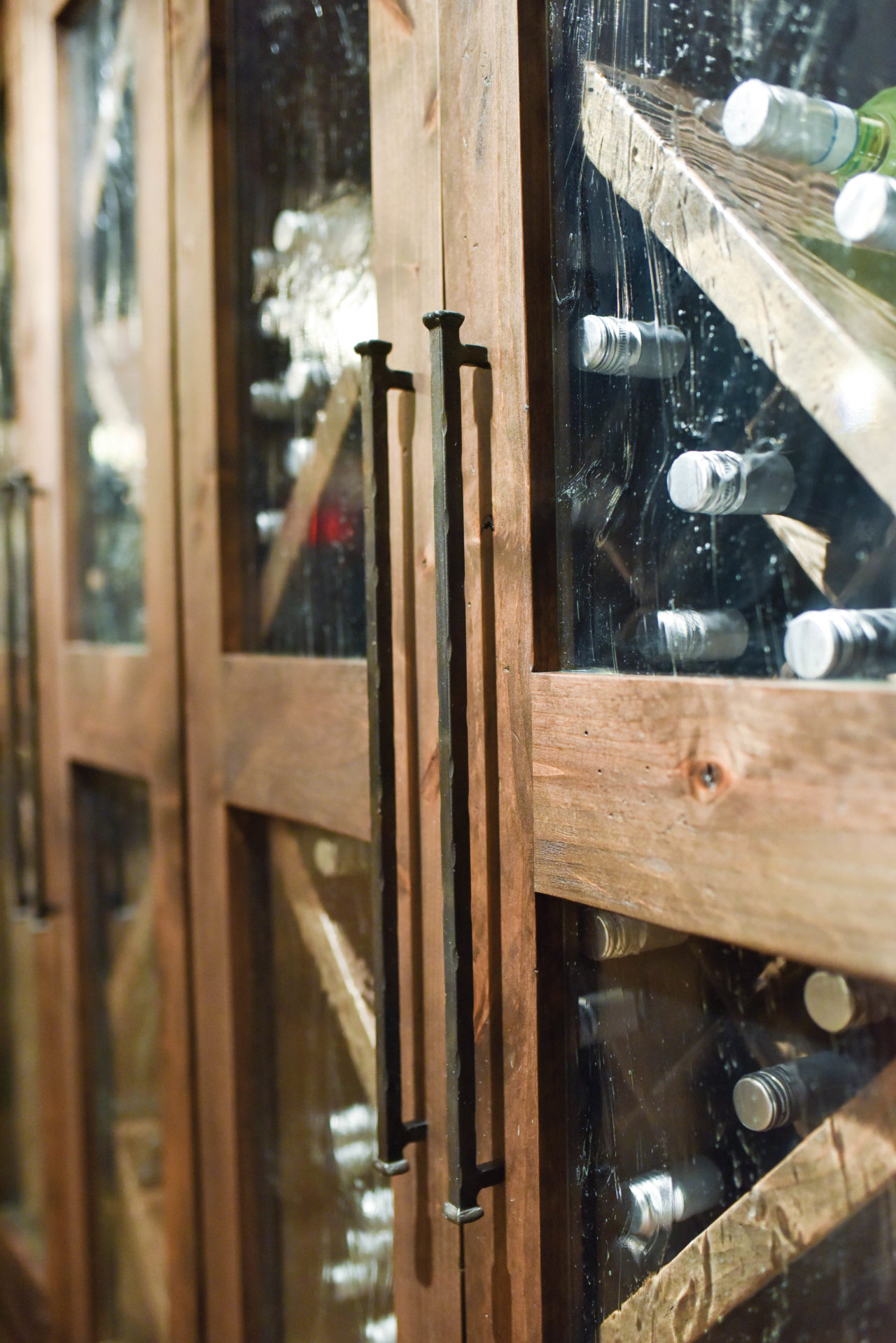
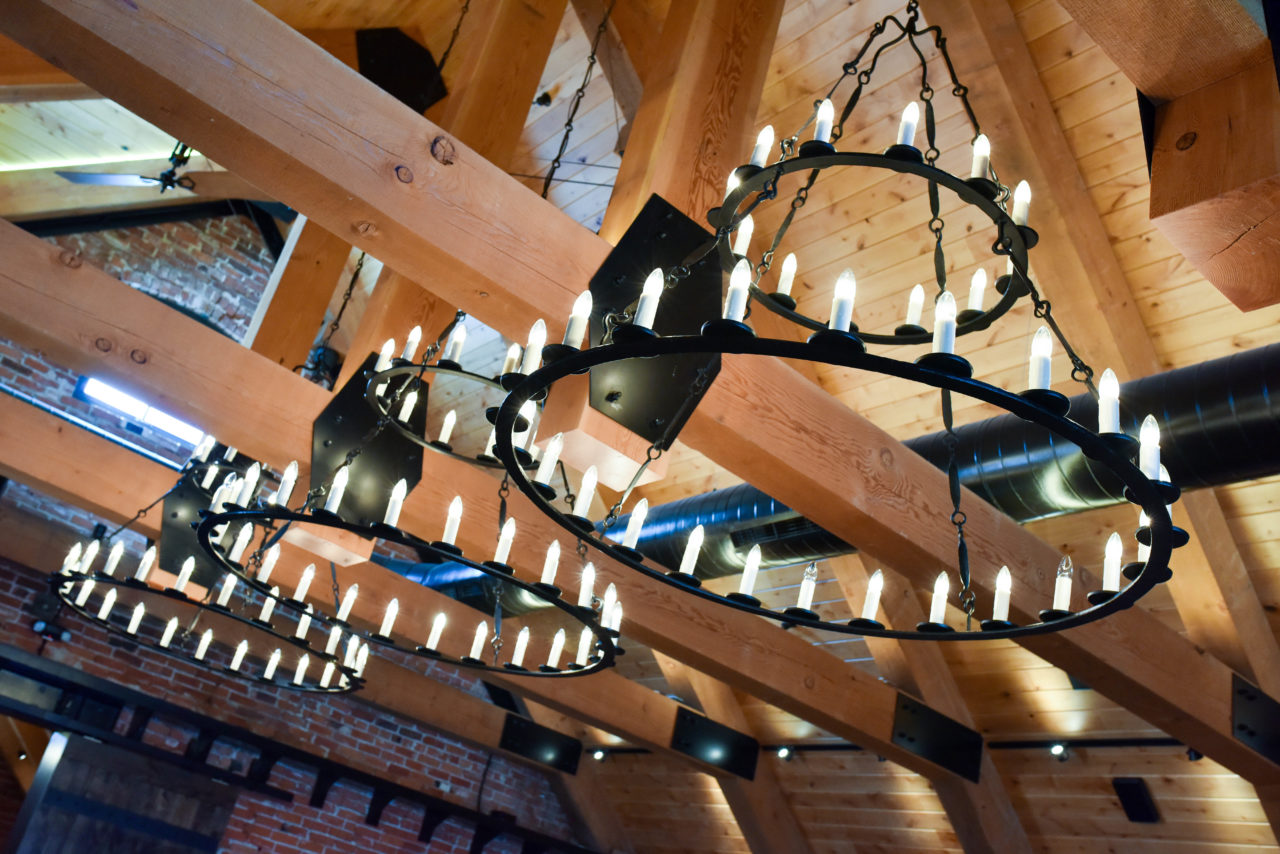
In converting the molasses pits in the basement into wine cellars and an event venue, Ginger and Baker’s developers preserved the original character of the space
For example, in converting the molasses pits in the basement into wine cellars and an event venue, Ginger and Baker’s developers preserved the original character of the space through thoughtful design elements such as heavy wooden support beams, cabinet door handles that resemble railroad spikes from the old train tracks that run outside the building, and the restoration of the original stone walls of the foundation.
Perhaps my favorite example of thoughtful repurposing in Ginger and Baker’s design is the chandelier that hangs in the stairwell. It is constructed using gears and other items that had been left behind on the property. The creative use of these items not only adds visual interest to the space but also pays tribute to the history embedded in it.
“Design is better when it is constrained and you have to use what is around you,” Everitt says. “Now that imported materials are more accessible than ever, you have to be more intentional to be authentic to your surroundings.”
Franklin Avery and other early leaders were kind enough to develop a layout for NOCO’s early neighborhoods that maximized the visual potential of the region’s homes and businesses. We see their influence today in the broad sightlines and wide-open feel of communities throughout NOCO, and in the city plans, building codes and municipal ordinances approved by the current generation of leaders.
Those values, coupled with the preservation of our cultural history, shows off NOCO’s design aesthetic to its best advantage. NOCO design reflects not only our physical environment but also our values as a less urbanized, more agricultural region. We are unique in that the pioneering spirit of NOCO was shaped not by silver and gold mining or rapid industrialization, but instead by ranching, farming and the railways that transported our products. This history grounds the area in a culture of stewardship and humility. It is the love of this history, combined with the respect for our physical environment, which shines in our design aesthetic today.

The Elizabeth Hotel is a newer building that pays tribute to the history of its surroundings.
Respecting Your Own History
Prior to the recent movement toward intentional design, many developers, architects and builders tried to create homes that were as neutral as possible in order to appeal to people moving into the area from elsewhere. Others imported more exotic styles (such as Tuscan), which have their virtues but don’t necessarily represent NOCO. All of this is not to say that elements from elsewhere can never be incorporated. In fact, the opposite is true.
“It is important to incorporate what is familiar into your NOCO aesthetic,” Everitt says. “These details add to the conversation, the story, of your home. They add a flare which remains special when done in moderation.”
It is all in the process of thoughtful editing and not overdoing it. I have seen an uptown San Francisco aesthetic incorporated beautifully into a Santa Fe home, with respect for the historic adobe style of the region. The result was a unique blend, which created harmony with the surrounding environment.

My personal design style is heavily influenced by time that I spent living in Thailand as a young girl. All of my first memories are from Thailand, and my mother brought back many artifacts, art, and furniture from our time living there. Almost every room has something from Asia in it. However, the initial feeling when you visit our home is Colorado mountain rustic, both inside and out.
The exterior of our home is covered in flagstone that was quarried in Lyons, and all woodwork inside our home is locally sourced. The Thai art and artifacts throughout, along with textiles and artifacts from several other countries, are thoughtfully curated to blend in with these finishes and not steal the spotlight from them. The result is a soothing home that fits beautifully into its environment, with moments from both my past and my present environments that bring me joy.
The Economic Upside of Authenticity
There’s an economic upside to being true to yourself and to your environment. When people commit to a community, they usually make design choices that will stand the test of time. Being authentic to the environment and its history is one of the best ways to avoid short-term design fads that require frequent updates.
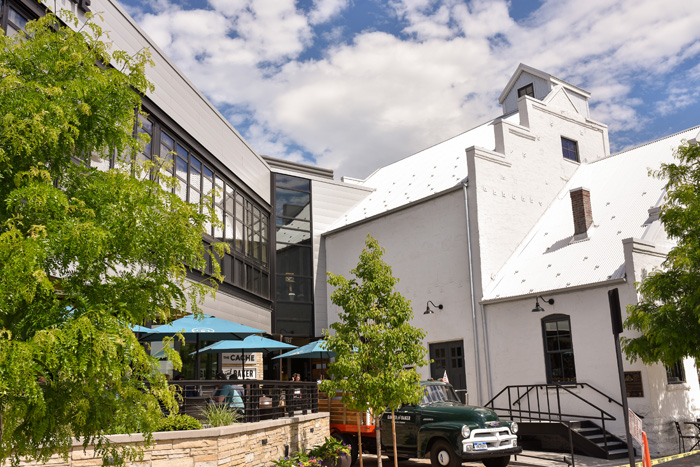
Want to see more? Take it one step further and visit a few venues open to the public that capture the essence of Northern Colorado style.
1. The Avery House
328 W. Mountain Ave.,Fort Collins
www.poudrelandmarks.org/avery-house
A must-see location for anyone interested in NOCO historic buildings. Learn local history in cozy Victorian surroundings.
2. The Gressiwick
426 N. Lincoln Ave., Loveland
www.gressiwick.com
This 1905 building showcases loads of vintage charm: oversized windows, exposed brick, and 12-foot ceilings with a modern edge from thoughtful renovations.
3. Centennial Village Museum
1475 A St., Greeley
www.greeleymuseums.com
Want to truly take a step back in time? This village provides a genuine sense of living in northern Colorado in centuries past.
4. Ginger and Baker
359 Linden St., Fort Collins
www.gingerandbaker.com
On the National Register of Historic Places and the State Register of Historic Properties, this property has been lovingly restored. Ask them to tell you about the molasses pit.
5. The Downtown Loveland Historic District
Centered on East Fourth Street, Loveland
This area provides no shortage of great restaurants, shopping and entertainment housed in thoughtfully restored buildings.
6. The Elizabeth Hotel
111 Chestnut St., Fort Collins
www.theelizabethcolorado.com
This may be a newer building, but it pays tribute to the history of its surroundings via spot-on art and a fun juxtaposition of materials.
7. Washington’s
132 Laporte Ave., Fort Collins
www.washingtonsfoco.com
Home to many businesses through the years, this building incorporates artifacts from its previous incarnations. The lovingly restored stained-glass window steals the show



